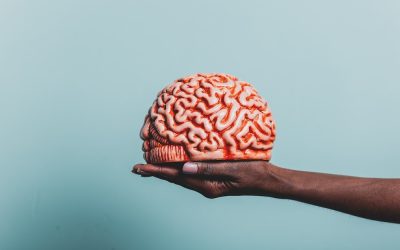Panic Attacks & Panic Disorder Treatment

Panic Disorder Treatment in Houston, Texas
Welcome to New Dimensions Day Treatment Centers, a premier mental health facility in the Greater Houston area for panic disorder treatment and panic attacks. With locations in Katy, The Woodlands, and Clear Lake, New Dimensions is dedicated to providing comprehensive, compassionate care for individuals struggling with panic disorders, addiction, and other mental health challenges.
Our team of experienced professionals is committed to creating a supportive environment where you can discover the path to recovery and reclaim the joy in your life. With a focus on personalized treatment plans, we utilize the latest therapeutic modalities to address not only the symptoms you’re experiencing but also the root causes of panic attacks and mental health conditions, ensuring a holistic approach to your well-being.
Understanding Panic Disorders
Panic disorders are a type of anxiety disorder characterized by unexpected and repeated episodes of intense fear accompanied by physical symptoms like chest pain, heart palpitations, shortness of breath, dizziness, or abdominal distress. These episodes, often referred to as panic attacks, can significantly impact an individual’s quality of life, leading to persistent worry about future attacks and changes in behavior to avoid situations that might trigger an attack.
The impact of panic disorders and ongoing panic attacks extends beyond just immediate symptoms. For many people, the constant worry about when the next attack may strike can profoundly affect an individual’s daily life, leading to avoidance behaviors that can restrict activities, diminish the quality of life, and even contribute to the development of phobias, such as agoraphobia. For adolescents and adults alike, panic disorders can disrupt schooling, employment, and relationships, accentuating the need for effective, empathetic treatment options.

Symptoms of Panic Attacks
Panic attacks are intense episodes of overwhelming fear or discomfort that arise abruptly and peak within minutes. As mentioned earlier, these episodes are marked by a constellation of physical and psychological symptoms that can be so severe they mimic life-threatening conditions, leading individuals to fear for their lives or worry about losing control. The symptoms experienced during a panic attack are comparable to general anxiety symptoms and vary widely among individuals. These commonly include:
- Rapid heartbeat or palpitations
- Sweating
- Trembling or shaking
- Shortness of breath or a feeling of being smothered
- Choking sensation
- Chest pain or discomfort
- Nausea or abdominal distress
- Dizziness, lightheadedness, or faintness
- Chills or hot flashes
- Numbness or tingling sensations (paresthesias)
- Feelings of unreality (derealization) or being detached from oneself (depersonalization)
- Fear of losing control or “going crazy”
- Fear of dying
Panic attacks can occur unexpectedly, without any apparent trigger, or specific situations or phobias may provoke them. Individuals may experience a panic attack once or twice throughout their lives without further episodes or complications. However, if panic attacks recur and lead to persistent worry about having more attacks or changes in behavior to avoid situations that might trigger an attack, they can signify a panic disorder, a specific type of anxiety disorder that requires professional treatment.
If you or a loved one is struggling with symptoms of panic disorder, check out our mental health guide on how to deal with panic attacks, or contact our admissions team today to learn more about our mental health services. We’re committed to helping you each step of the way as you journey toward mental wellness and recovery.
Causes & Risk Factors for Panic Disorder
Panic disorders are complex conditions with roots that intertwine genetic predispositions, psychological vulnerabilities, and environmental triggers. The intersection of these factors can create a perfect storm, leading to the onset of panic attacks and, over time, the development of panic disorder. Here is an exploration of the primary causes and risk factors for panic disorder:
- Genetic Predisposition: Research suggests that panic disorder can run in families, pointing to a genetic component. Individuals with first-degree relatives who have an anxiety disorder are at a higher risk, indicating that certain genes may increase susceptibility to panic disorders.
- Life Stressors: Major life changes, stressful events, or a high-stress lifestyle can trigger the first panic attack and contribute to the development of panic disorder.
- traumatic Events: Experiences of trauma, such as physical or emotional abuse, can significantly increase the likelihood of panic disorder.
- Personality Traits: Certain personality traits, such as a tendency towards perfectionism or a high need for control, can also heighten the risk of developing panic disorders.
- Substance Use: The chronic use of or withdrawal from substances like caffeine, alcohol, and drugs may trigger panic attacks in susceptible individuals, leading to the development of panic disorder.
Understanding these causes and risk factors can be helpful when developing a comprehensive approach to treatment that addresses the root causes of the disorder, reduces the severity and frequency of panic attacks, and helps individuals lead more balanced and fulfilling lives. Tailoring treatment to address specific triggers and vulnerabilities can also improve treatment outcomes, making a huge difference in the lives of those affected by panic disorders.
Related: Understanding Panic Disorder

Integrated Panic Disorder Treatment at New Dimensions
Panic disorder is a multifaceted condition that can significantly impact an individual’s life. Treatment often requires a comprehensive approach, utilizing various therapeutic modalities to address both the psychological and physiological aspects of the disorder. Here’s a look at some of the most useful therapeutic modalities for treating panic disorder:
Cognitive-Behavioral Therapy (CBT)
Cognitive-behavioral therapy (CBT) is widely regarded as one of the most effective treatments for panic disorder. This intervention works on the principle that our thoughts, feelings, and behaviors are interconnected and that changing negative thought patterns can lead to changes in feelings and behaviors. CBT helps individuals identify and challenge the irrational beliefs and fears that contribute to their panic attacks, teaching them coping strategies to deal with future episodes.
Psychodynamic Therapy
This therapy focuses on exploring the underlying psychological roots of panic disorder, such as unresolved conflicts or dysfunctional patterns of behavior that stem from past experiences. By gaining insight into these underlying issues, individuals can work through these conflicts and find healthier ways to cope with stress and anxiety.
Acceptance and Commitment Therapy (ACT)
Acceptance and Commitment Therapy (ACT) is a form of cognitive-behavioral therapy that uses acceptance and mindfulness strategies and commitment and behavior change strategies to increase psychological flexibility. For individuals experiencing high levels of anxiety and panic attacks, ACT can help by teaching them to accept their anxiety and panic symptoms without judgment, reducing the impact and influence of these symptoms on their lives.
Dialectical Behavior Therapy (DBT)
DBT is a form of cognitive-behavioral therapy that combines standard CBT techniques with mindfulness practices. It is particularly effective for individuals who experience intense emotions. DBT for panic disorder focuses on teaching skills in four key areas: mindfulness, distress tolerance, emotion regulation, and interpersonal effectiveness. These skills can help individuals manage their symptoms more effectively and reduce the frequency of panic attacks.
Mindfulness-Based Stress Reduction (MBSR)
Mindfulness-Based Stress Reduction (MBSR) is a therapeutic program that teaches mindfulness meditation to reduce stress and improve emotional regulation. For individuals with panic disorder, practicing mindfulness can help them stay present and maintain a nonjudgmental awareness of their thoughts and sensations, reducing the intensity of panic attacks and increasing their ability to cope with anxiety.
Medication and Therapy Combination
Often, a combination of medication (such as antidepressants or anti-anxiety medication) and therapy is used to treat panic disorder. Medication can help manage the physiological symptoms of panic disorder, making it easier for individuals to engage in and benefit from therapeutic modalities.
Each of these therapeutic approaches offers unique benefits and can be tailored to meet the individual needs of those with panic disorder. A mental health professional can help determine the most appropriate treatment plan based on the severity of the disorder, the individual’s preferences, and overall health.

Panic Attack Statistics & Prevalence
Panic attacks are a widespread concern, affecting a significant portion of the population at some point in their lives. Understanding the prevalence and impact of panic attacks can help demystify the experience and encourage those affected to seek support. Here are some key statistics:
- Adult Prevalence: Studies show that approximately 2-3% of adults in the United States experience panic disorder within a given year.
- Gender Differences: Panic disorders are more commonly diagnosed in females than in males across all ages, with women being twice as likely to be affected by panic disorder.
- Adolescent Prevalence: Diagnostic interview data from the National Comorbidity Survey Adolescent Supplement (NCS-A) showed that an estimated 2.3% of adolescents had panic disorder within a given year.
- Comorbidity: A study involving a sample of 49 panic disorder patients and 44 patients with no psychiatric diagnosis uncovered that 98% of panic disorder patients had at least one co-occurring condition, with major depressive disorder (MDD) and anxiety disorders being the most common.
- Treatment Seeking: Despite the high prevalence and significant impact of panic and anxiety-related disorders, many of those affected do not seek professional help. This is often due to stigma, lack of awareness, or misunderstanding about the nature of panic attacks and available treatments.
These statistics highlight the need for accessible, effective treatment options and the importance of encouraging individuals to seek help without fear of stigma. With the right support, many people can manage their symptoms and lead fulfilling lives.
If you or a loved one is struggling with anxiety, stress, or panic attacks, you’re not alone. New Dimensions specializes in treating mental health conditions, substance use, and dual diagnosis for adults and adolescents in the Greater Houston area.
Call today to learn more about our various treatment programs and how we can help you or your loved one.

Why Choose New Dimensions Day Treatment Centers for Panic Disorder Treatment?
Located in Greater Houston, Texas, with locations in Katy, The Woodlands, and Clear Lake, New Dimensions Day Treatment Centers is a mental health facility specializing in the treatment of mental health, addiction, and dual diagnosis, including panic disorders. What sets New Dimensions apart is our commitment to providing personalized treatment for each individual, designed to address the complex needs of those dealing with panic disorders. Our various outpatient programs and levels of care are designed to meet you where you’re at and guide you as you begin your recovery journey.
Psychological Testing for Anxiety and Panic Disorder in Houston, Texas
If you or someone you know is struggling with panic attacks, New Dimensions Day Treatment Centers in Houston, Texas, is here to help. Contact us today to learn more about our services and how we can assist you on your journey to recovery.
Contact Us
New Dimensions provides various intensive outpatient treatment programs and levels of care for adolescents and adults struggling with mental health or substance abuse issues. Contact us to learn more or verify your insurance benefits.
Related:
Understanding Panic Disorder & How New Dimensions Can Help
Panic disorder is a common and, in many cases, debilitating mental health condition that involves recurrent and unexpected panic attacks. These attacks are intense, overwhelming episodes of fear and anxiety that can be accompanied by physical symptoms like a racing heart and shortness of breath.
Treatment for Severe Panic Attacks in Katy, Texas
If you live in Katy, Richmond, Cypress, Sugar Land, Missouri City, Sealy, West Houston, Stafford, Fulshear, or surrounding areas and are struggling with severe panic attacks, New Dimensions can help. We specialize in helping individuals who are in crisis because of...
Treatment for Severe Panic Attacks in the League City area of Houston
If you live in Houston, Clear Lake, League City, Friendswood, Pearland, LaPorte, Pasadena, Deer Park, Baytown, Dickinson, Alvin, Galveston, or the surrounding areas and are struggling with severe panic attacks, New Dimensions can help. We specialize in helping...
Nervous Breakdown Treatment
Daily life is jampacked with persistent stimulation and enormous stress. It can feel as if life's demands are coming at us constantly while providing little to no relief. These stressors can deliver immense feelings of worry, hopelessness, panic, and paranoia. When...
The Effects of Fear on the Brain and Body
Fear is one of the most basic and powerful human emotions. It can be critically helpful in situations where we need to protect ourselves from danger. But did you know that fear can also have a negative impact on our health? Fear can become a problem when it is chronic...
Treatment for Severe Panic Attacks in The Woodlands, Texas
If you live in Houston, The Woodlands, Spring, Tomball, Conroe, Humble, Cypress, Huntsville, or the surrounding areas and are struggling with severe panic attacks, New Dimensions can help. We specialize in helping individuals who are in crisis because of their extreme...
Can I Experience Anxiety Even When I’m Safe?
Anxiety is a familiar feeling, and we all experience anxiety at some time. Usually, this occurs when there are obvious threats to our safety or when we anticipate failure, criticism, or judgment. But can a person experience anxiety even when there is no apparent...
Anxiety Symptoms
Anxiety is an experience of worry and fear that can create debilitating effects if not managed effectively. Some of the symptoms of anxiety include: Restlessness Sweating Trembling or shaking Accelerated heart rate Shortness of breath Chest pains Fear of dying or...
Panic Attack Symptoms
A Panic Attack is a sudden surge in intense fear that usually peaks within a few minutes. During a panic attack, individuals tend to experience some of the following: Accelerated heart rate Shortness of breath Shaking Sweating Chest Pain Nausea Feeling light-headed or...








